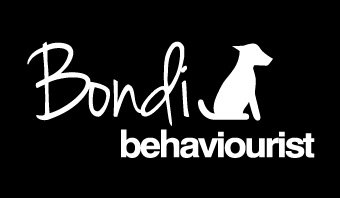Fear Periods
If you’re struggling with your dogs fear periods and enjoyed this blog, check out the webinar series at the bottom of this page, The Five Pillars of Emotional Regulation.
Do you have days where your dog is suddenly different? Scared of things they weren’t before, or extra nutty and cannot settle down?
It’s normal, don’t worry!! But how you handle it can literally make all the difference to your dog’s mental health for potentially years to come.
Your dog is very likely to be in a ‘fear period’ and this article is here to help you understand them and give you some key do’s and don’ts for you to take away.
A fear period is a period of time that the dog’s danger brain activates more readily than usual.
It is normal for most puppies and adolescents to go through ‘Fear Periods’. The first fear imprint period generally occurs between 8-11 weeks. Between 6-14 months there can be further periodic fear periods which are also normal.
Dogs whose genetic heritage has programmed them to be alert and focused will often outwardly have a more pronounced fear period. Breeds with guarding instincts and those that are prone to hypersensitivity like your herding breeds will need a healthy socialisation protocol in place during the socialisation period and adolescence.
Unfortunately, these periods do not come with a warning, there are no obvious signs that your dog is about to go through or is going through one. You may notice that your dog is more easily spooked or startled than usual, that they are more vigilant and that they are noticing things that they never seemed to notice before.
Early signs to look out for are: hesitance, such as stopping when walking; and avoiding certain areas objects or individuals. The dog may start growling or letting off low chuff like barks, this is the dog communicating that it is unsure.
If this happens, then it is important to take it easy on what you expose your dog to, keeping things simple for the dog to digest, and most of all, keeping the dog comfortable. It would be a mistake to force the dog to confront what it fears by taking it closer to it unwillingly or repeated over exposure, this may induce panic in the dog.
On the other end of the scale, some dogs go hyperactive or fidgety when a fear period hits. This can be spotted in behaviours such as more attention seeking than usual, following around the home and more pacing than usual. Because so many owners are completely unaware that fear periods exist in the first place, their first thought is usually to take the dog out and exercise them to ‘drain some energy’.
Unfortunately, this could be detrimental to the dog’s mental health, everything they learn whilst taken out in this frame of mind may be associated with fear, stress or anxiety. They’re always learning and what frame of mind they’re in while they’re out in the world will be a good indicator of the emotional associations they are building at these times. So at these times, less is more!!
If we spot a fear period, our goal should be to make them comfortable and teach them to settle down through calm communication and some gentle brain games of mental enrichment. Old sayings like a ‘tired dog is a happy dog’ can be a bit misleading in our experience, we feel that a more accurate saying is a ‘content dog is a happy dog’
A dog that is pushed over their threshold, by repeated exposure to what they find stressful may become averse to it, either trying to flee from it or even display aggressive towards it with the aim of creating distance from what it fears.
Barking and lunging are communication patterns used to make things go away, the more the dog gets to practice these behaviours with the outcome of the dog being safe at the end of the experience, the more learnt the behaviour will become.
In moments of fear and anxiety, the only goal for the dog is to stay safe, whatever behaviour it completes in these moments will become the learnt coping mechanism should this event happen again. The dog never wants to behave aggressively, but in moments where they feel they have to, in order to stay alive, they will.
When handling a dog that is displaying signs that they may be going through a fear period:
Create positive experiences for your dog between environments, objects, people, cats and dogs.
Dogs can develop anxieties from one bad incident.
In moments of stress, comfort the dog by creating distance and then giving reassurance through positive reinforcement.
Don’t force your dog into situations that make them uncomfortable.
Give your dog time to adjust. Do not over expose or overwhelm your dog, do activities that your dog enjoys at home and when in public, use environments that are easy for your dog to digest
If it means taking a day or two off of walking, and training them at home, then do this. A couple of days off of what scares the dog will allow them to regroup, give time for their cortisol levels to drop back down and be in a frame of mind ready to take on new things.
One of the hardest things that owners of young dogs that suffer from fear periods struggle with is that the way that they have to interact with and treat their new best mate is not exactly what they signed up for.
When people bring their dogs into their lives, they so often envisage playing in fields and running along beaches where as so many of these pups and dogs that suffer from fear periods simply cannot cope with this level of stimulation at this stage of their lives.
We want people to adopt quite a boring approach when fear periods hit. Think about it like your aim is to make each day easy, not to give them lots of new experiences. Basically we need them to recover, BEFORE we can get back out there and do all the fun stuff again.
We know this can seem less appealing to some dog owners. Unfortunately we do not always get what we sign up for when we take a dog into our homes. However, it is so important to recognise the level of care they need and move at their pace, regardless of what ‘might of been’ had we been dealt a different hand.
These stages are temporary in the dogs life if handled well, and while some may never be able to cope with the high levels of environmental stimulus that others can, all young dogs stand a better chance of desensitising and becoming better equipped at coping with these pressures later in life if we move at their pace and build calm and positive associations.
When we take our dogs out, they are learning one way or another. If they get exposed to everything while they are panicking, this is what they will learn from the world. If they get exposed calmly, at their pace and using positive reinforcement then the world seems like a great place.
If we do this, we will raise emotionally stable dogs and far fewer undesirable behaviours will crop up down the track.
It is up to us to expose them to what they’re ready for and not push too hard, monitoring their levels of stress and and ensuring they’re forming a memory bank full of positive experiences. Each dog gets dealt a different genetic hand and this will account for their behaviour in many ways, we cannot change genetics and working against them is futile.
For dog owners it can be so tricky navigating fear periods and knowing what to do next can be pivitol in your dogs development. If you think you could do with some support through this time then we’re here to help, check out our training options or book in a Discovery Session to get started on your training journey.




